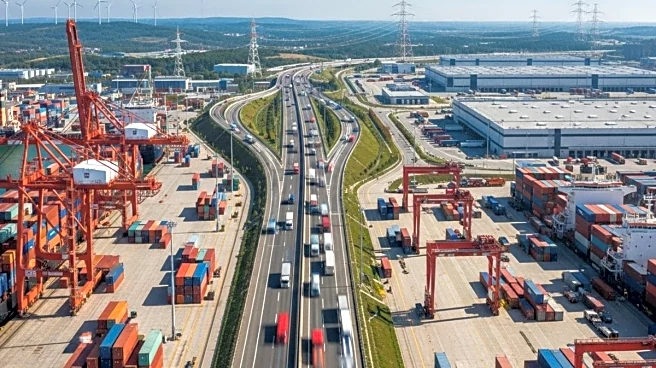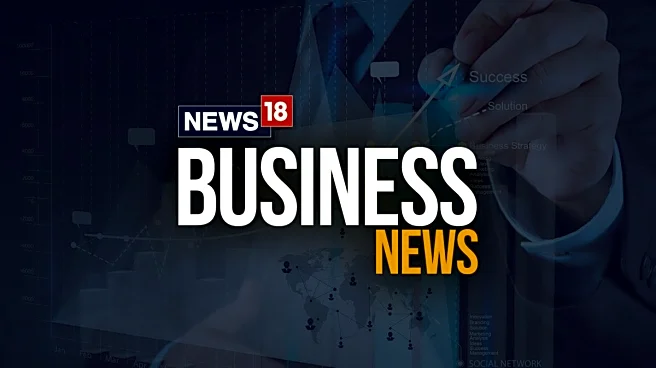India’s Infrastructure Investment Trusts (InvITs) market is projected to grow nearly threefold to around Rs 21 lakh crore in assets under management (AUM) by 2030, driven by rising institutional participation, policy reforms, and the country’s $4.5-trillion infrastructure investment push, according to a new white paper by Client Associates (CA) titled “InvITs in India: A Comprehensive Analysis 2025.”
InvITs are trust-based pooled investment vehicles that own and operate infrastructure assets such as roads, transmission networks, and logistics facilities. Mandatorily listed—either publicly or privately—they differ in liquidity, minimum investment thresholds, and investor access, yet share a common framework that facilitates the pooling and monetization
of infrastructure assets under a transparent regulatory regime.
As of FY2025, India’s InvIT ecosystem comprises 27 registered trusts (24 listed (6 public, 18 private) and 3 unlisted, with combined assets under management of ₹6.3 lakh crore. Over the past five years, InvITs have mobilized about $15.8 billion, while the Assets under Management have nearly doubled—from $37.0 billion in FY20 to $73.0billion in FY25—underscoring the segment’s rapid expansion and rising market significance.
Global institutional investors—including KKR, Brookfield, CPP Investments, and Ontario Teachers’ Pension Plan—dominate ownership, reflecting international confidence in India’s infrastructure platform. The road sector anchors over 55.0% of InvITs, followed by energy infrastructure (18.5%) and warehousing & logistics (11.1%).
Strong Performance with Important Caveats
CA’s analysis reveals that InvITs have delivered average pre-tax returns of 10–12% and post-tax returns between 7–9%, outperforming traditional fixed-income instruments. Nearly majority of total returns come from steady distributions,
However, the white paper emphasizes that InvITs have also exhibited price volatility during recent years, underscoring their hybrid nature and associated risks. In recent years, while InvITs have outperformed several traditional fixed-income products with better post-tax yields, their price movements can materially alter total return outcomes.
InvITs exhibit a distinct risk-return profile with volatility of 10.2% versus 15.4% for equities, offering a relatively stable investment profile while delivering total returns of 12.2%—slightly below equities of 12.3%—but providing steady income.
Investment Characteristics and Portfolio Positioning
CA’s analysis positions InvITs within the alternative debt or Alt-Debt sleeve of a diversified portfolio. InvITs provide diversification benefits through low correlation with traditional asset classes—a correlation coefficient of 0.42 with equity markets stems from infrastructure assets’ utility-like characteristics and contracted revenue streams that are largely independent of economic cycles.
Their portfolio functions include:
• Income generation: Similar to fixed income but with higher yields, albeit with some unit price volatility
• Diversification: Reducing overall portfolio risk through low correlation with equities
• Inflation hedging: Infrastructure revenues are often linked to inflation indices, providing protection against rising prices
InvITs are best suited for:
• Income-focused individuals seeking stable, recurring income
• Conservative investors looking for alternatives with superior post-tax yields compared to traditional debt instruments
• Diversification-oriented investors aiming to participate in India’s infrastructure growth story
• Investors with long time horizons with appetite to ride out price volatility
Critical Selection Factors: Avoiding Indiscriminate Investment
CA emphasizes that while InvITs present opportunities to participate in India’s infrastructure growth story, indiscriminate investment should be avoided. Entry valuation, liquidity considerations, and tax treatment of distributions are critical factors for achieving superior risk-adjusted returns.
The white paper identifies several critical success factors:
Liquidity Constraints: Of 27 registered InvITs, the investible universe for retail investors is significantly narrow due to liquidity constraints. Currently, there are about six publicly listed InvITs that are sufficiently liquid and do not require special arrangements for buying or selling units.
Tax Efficiency: The distribution mix between interest, dividends, and capital repayment drives post-tax returns. On average, approximately 75% of distributions are taxable (primarily interest and dividends), while approximately 25% are non-taxable (mainly capital repayment). This split significantly impacts post-tax yields, particularly for investors in the highest tax bracket. The distribution profile varies widely across InvITs.
Entry Valuation: The purchase price has a significant bearing on yield and total return. Investors should assess underlying asset quality, debt levels, and sponsor track record to avoid price erosion risks that can bring down total returns.
Sponsor Strength: Strong and credible sponsors enhance asset quality, operational performance, and investor confidence.
Market Realities and Growth Potential
The white paper candidly addresses market limitations. Retail participation remains modest, accounting for roughly 7% of total ownership. This limited engagement reflects the specialized nature of the asset class, low awareness among individual investors, and liquidity constraints in the secondary market. Nearly half of ownership (47.9%) is concentrated with promoters, while institutional investors (22.3%) and foreign investors (12.3%) together account for over a third of holdings.
Despite these constraints, the white paper projects substantial growth: industry estimates suggest that the InvIT market could reach approximately ₹21 lakh crore in assets under management by 2030, implying a 3x growth from current levels. This growth will be driven by:
• Infrastructure investment requirements estimated at $4.5 trillion by 2030
• Government initiatives like the National Infrastructure Pipeline
• Rising institutional allocations to alternative assets
• Corporate capital optimization through InvITs
• Low retail penetration offering meaningful room for growth
Balanced Conclusion: Opportunity with Discipline
The white paper concludes that InvITs have emerged as a key component of India’s infrastructure financing strategy, offering predictable income, low correlation with equity markets, and inflation resilience. As India’s infrastructure expansion accelerates, InvITs offer opportunities for investors seeking consistent cash flows and diversification. However, selectivity remains key—liquidity, asset quality, and underlying project fundamentals must be carefully assessed.
The white paper highlights a pivotal regulatory development: in September 2025, SEBI reclassified REITs as equity instruments for mutual fund investments while retaining InvITs in the hybrid category. This underscores the key characteristic difference between the two instruments—REITs are more aligned with equity in terms of structure and liquidity, while InvITs are predominantly privately placed with more stable cash flows and lesser liquidity, behaving more like debt-hybrid rather than equity.
Several government-backed reforms have catalysed InvITs’ growth:
• National Infrastructure Pipeline (NIP): Targeting over $4.5 trillion in infrastructure investment by 2030, expanding project pipelines across roads, energy, logistics, and digital infrastructure
• Asset Monetization Strategy: Public authorities including NHAI and Power Grid Corporation have launched InvITs to recycle capital—demonstrating government confidence in the model
• Tax Reforms (2024): Long-term capital gains (LTCG) holding period reduced from 36 to 12 months and taxed at 12.5%, significantly improving investor returns
• Enhanced Accessibility (2025): Minimum investment for privately listed InvITs cut to ₹25 lakh; private-to-public conversion norms simplified;


/images/ppid_59c68470-image-17621575441512176.webp)


/images/ppid_59c68470-image-176226758126781539.webp)


/images/ppid_59c68470-image-176216513224930935.webp)
/images/ppid_59c68470-image-176214253568943032.webp)
/images/ppid_59c68470-image-176218007273037411.webp)
/images/ppid_59c68470-image-176222254120733270.webp)
/images/ppid_59c68470-image-176214003578346585.webp)
/images/ppid_59c68470-image-176223003527574335.webp)
/images/ppid_59c68470-image-1762230139610280.webp)